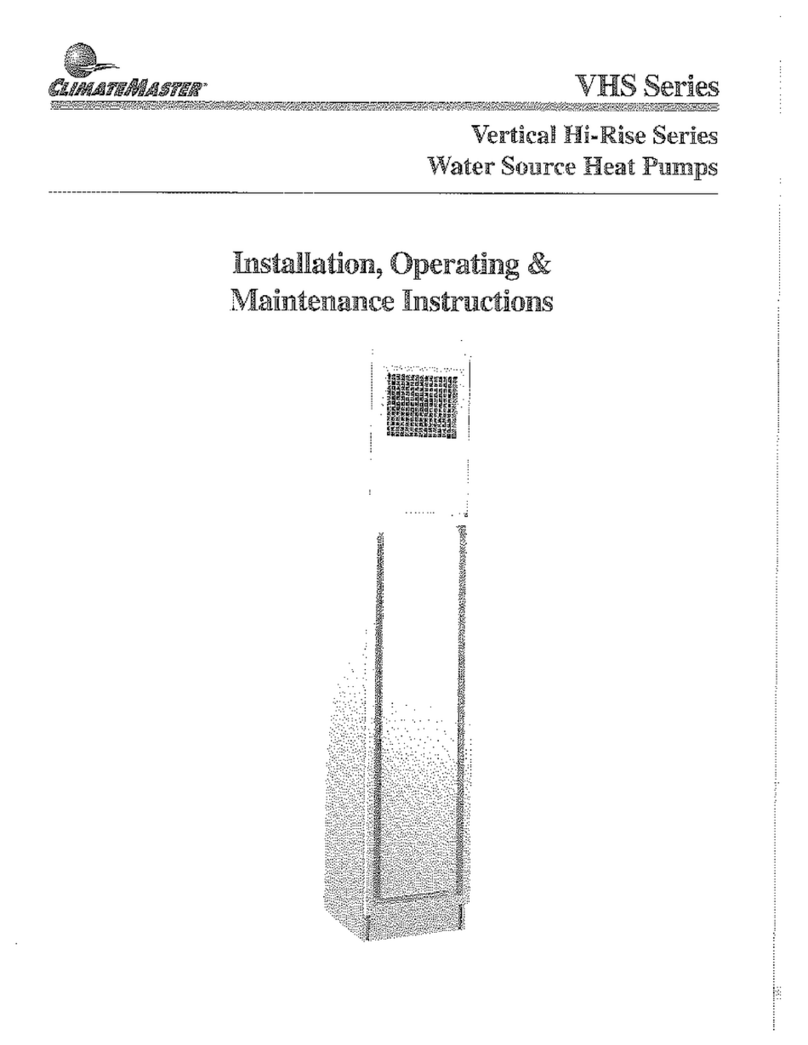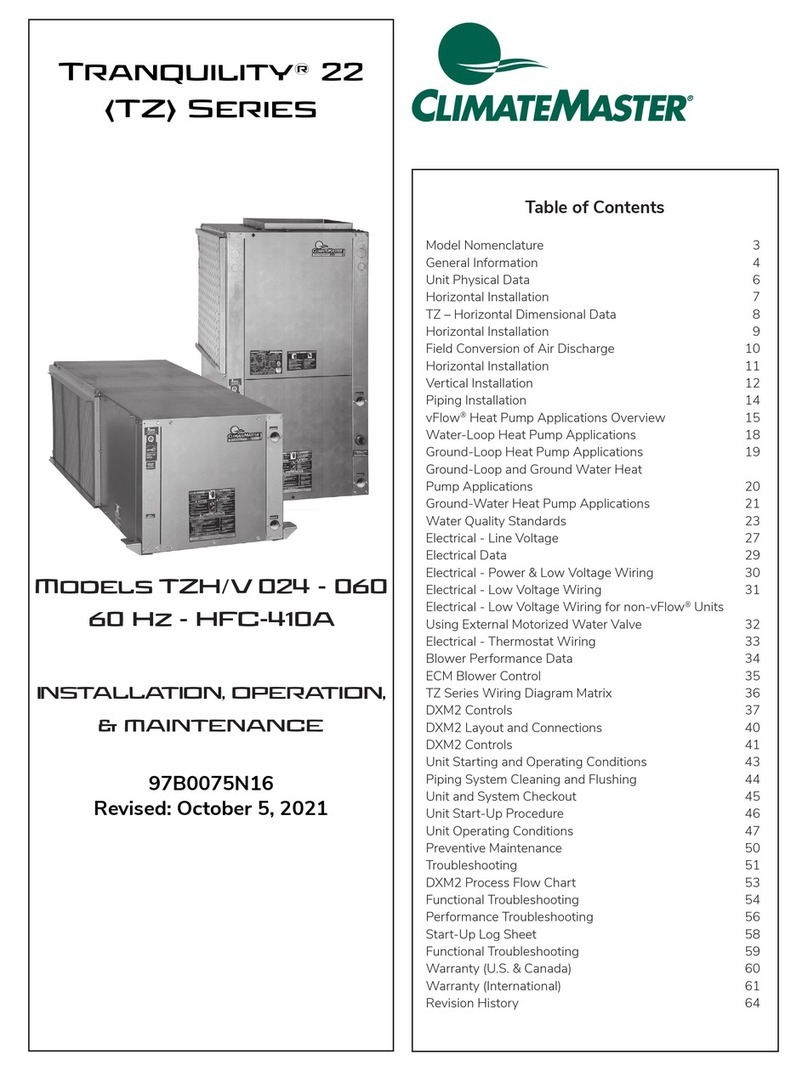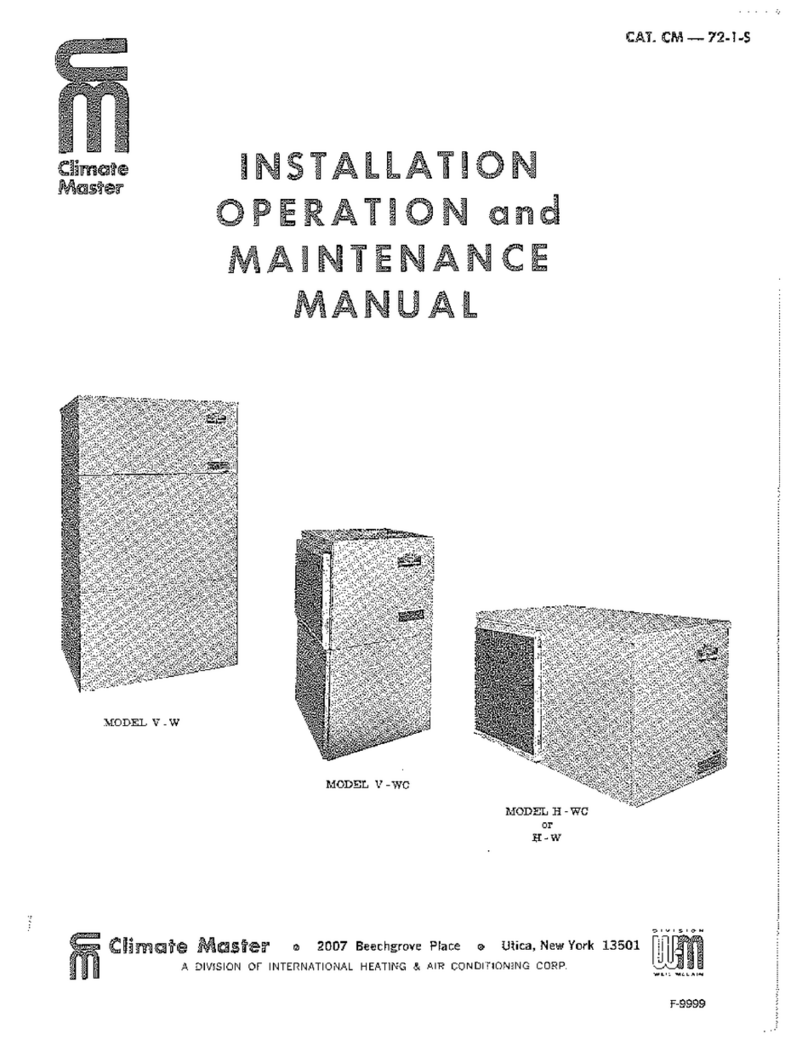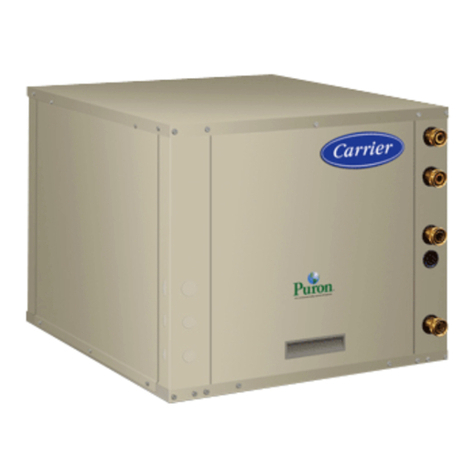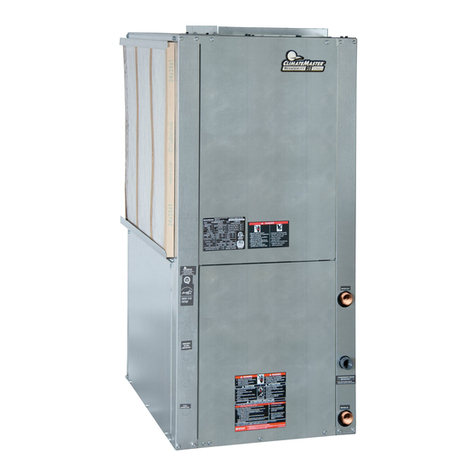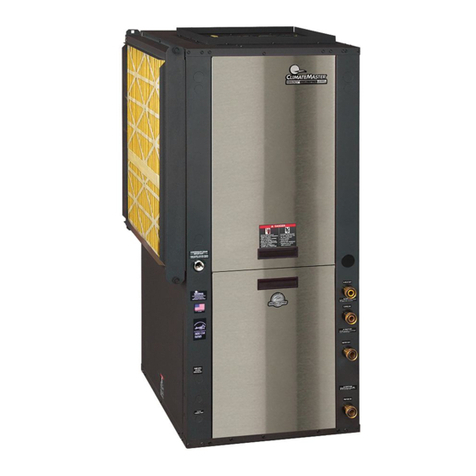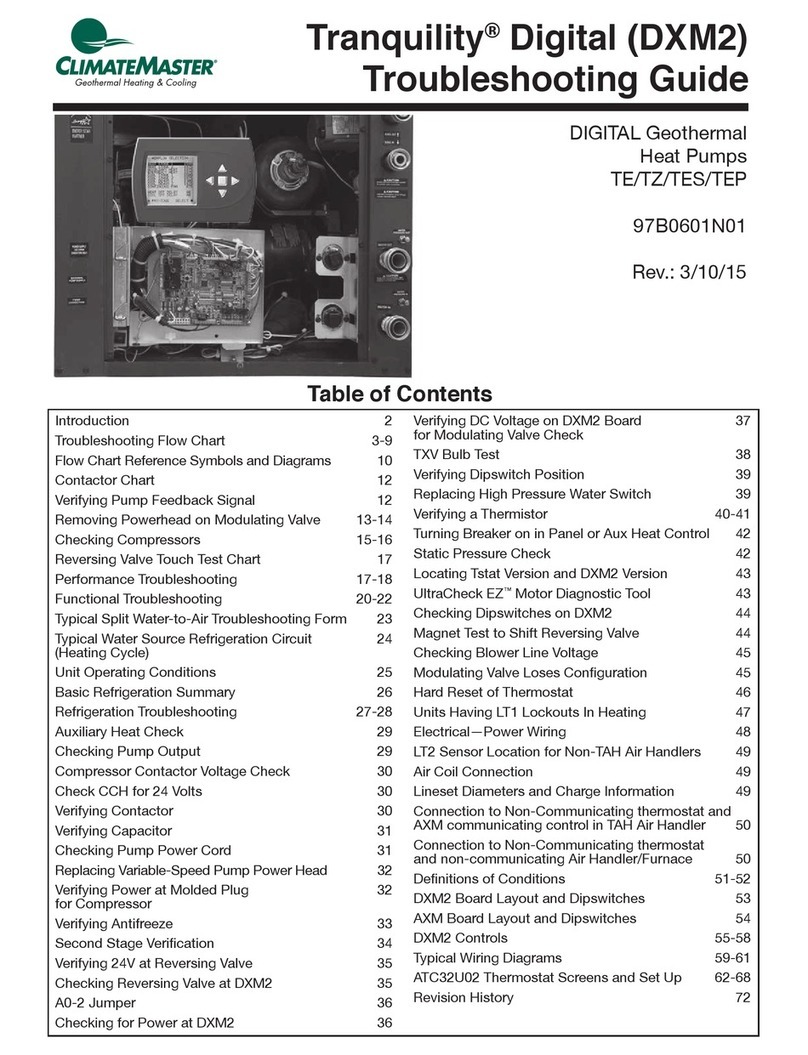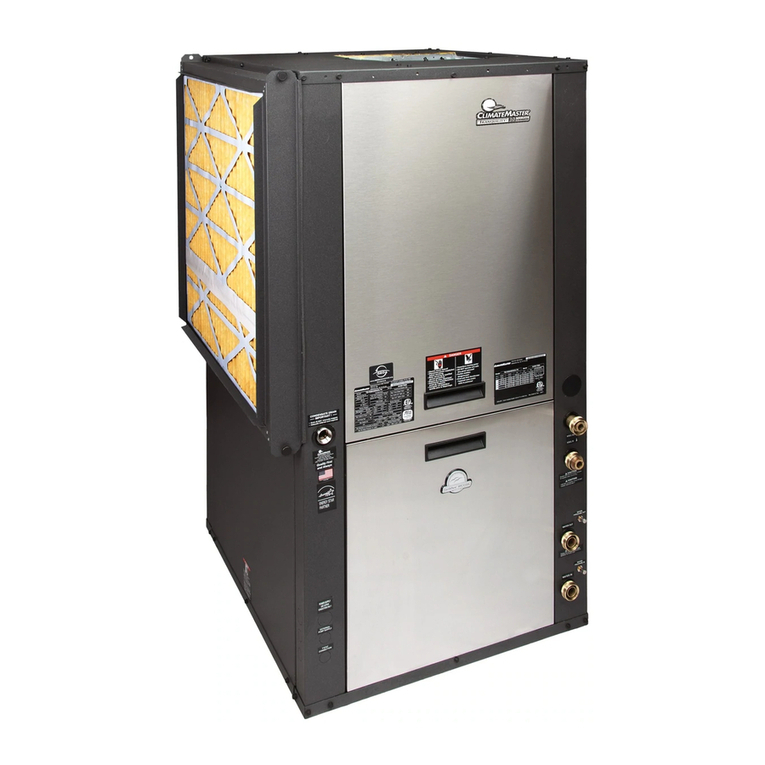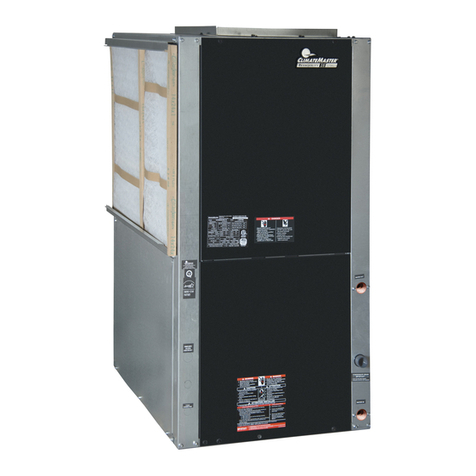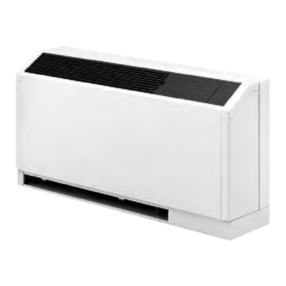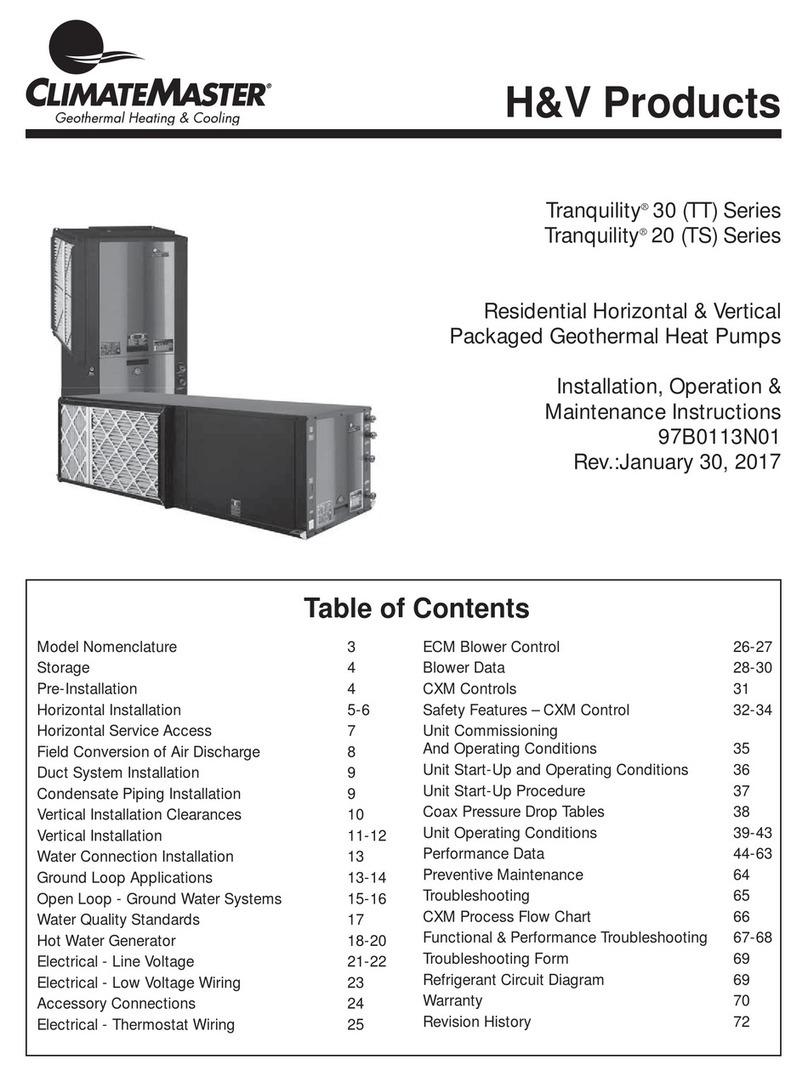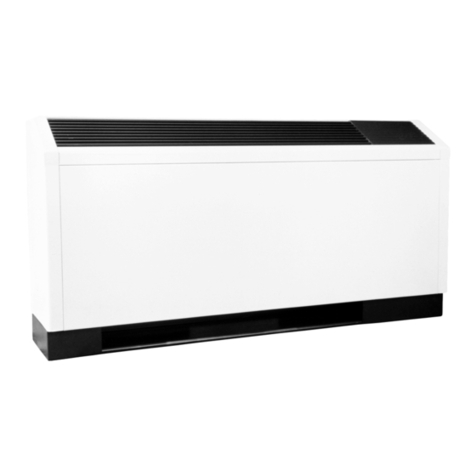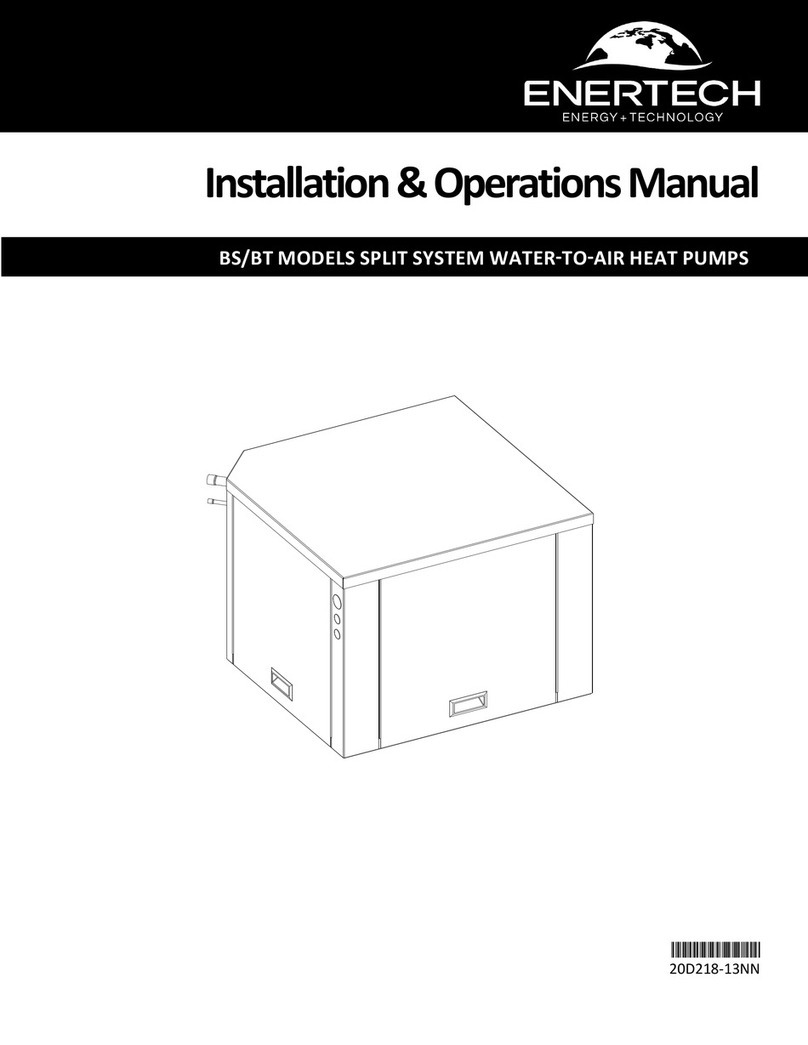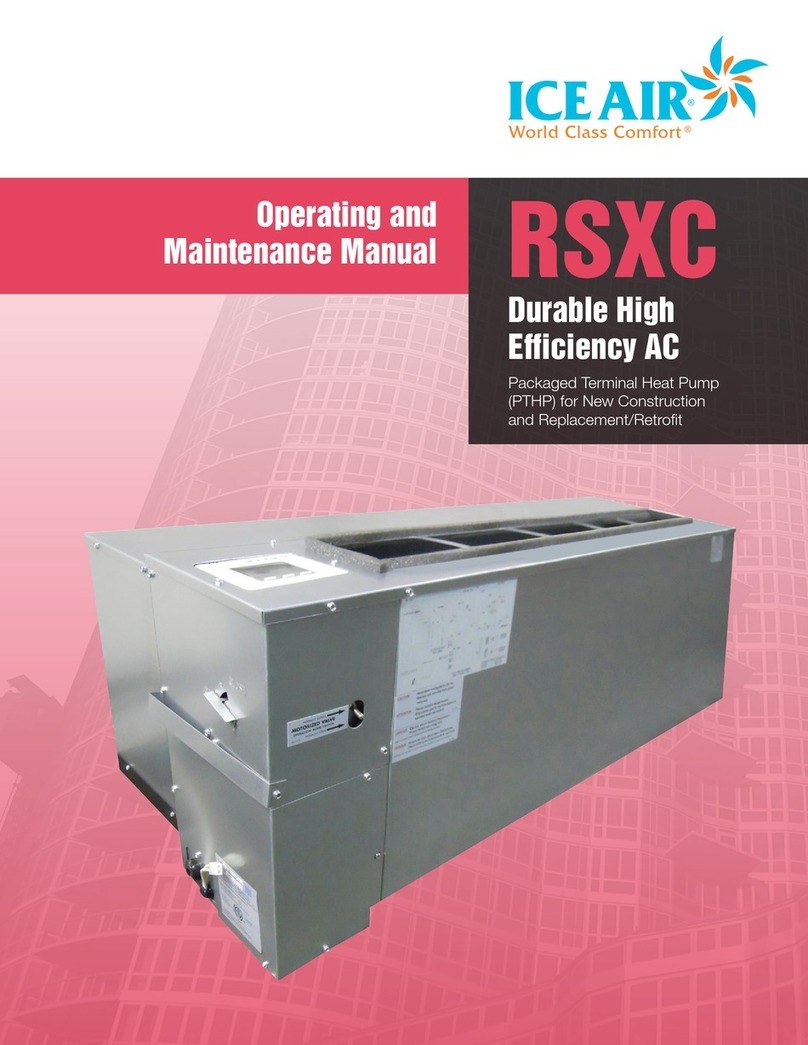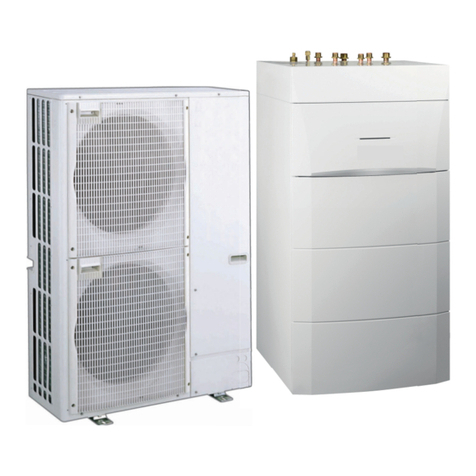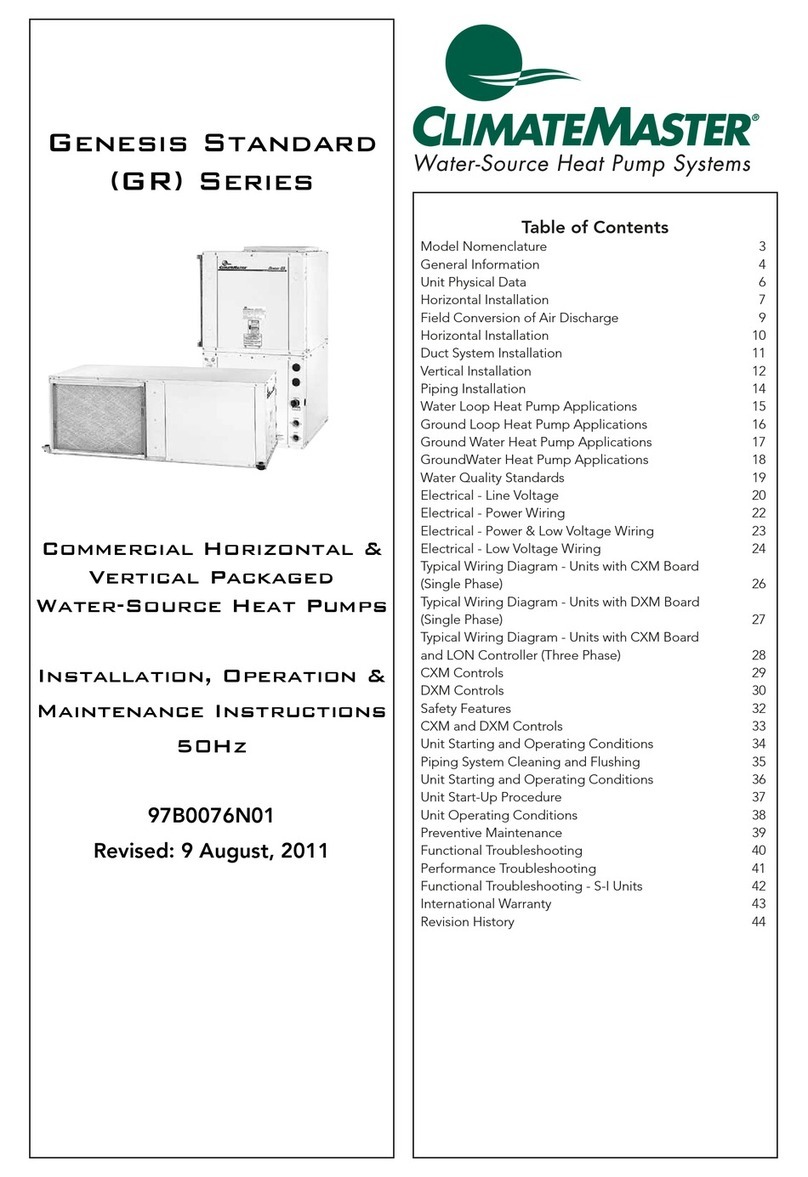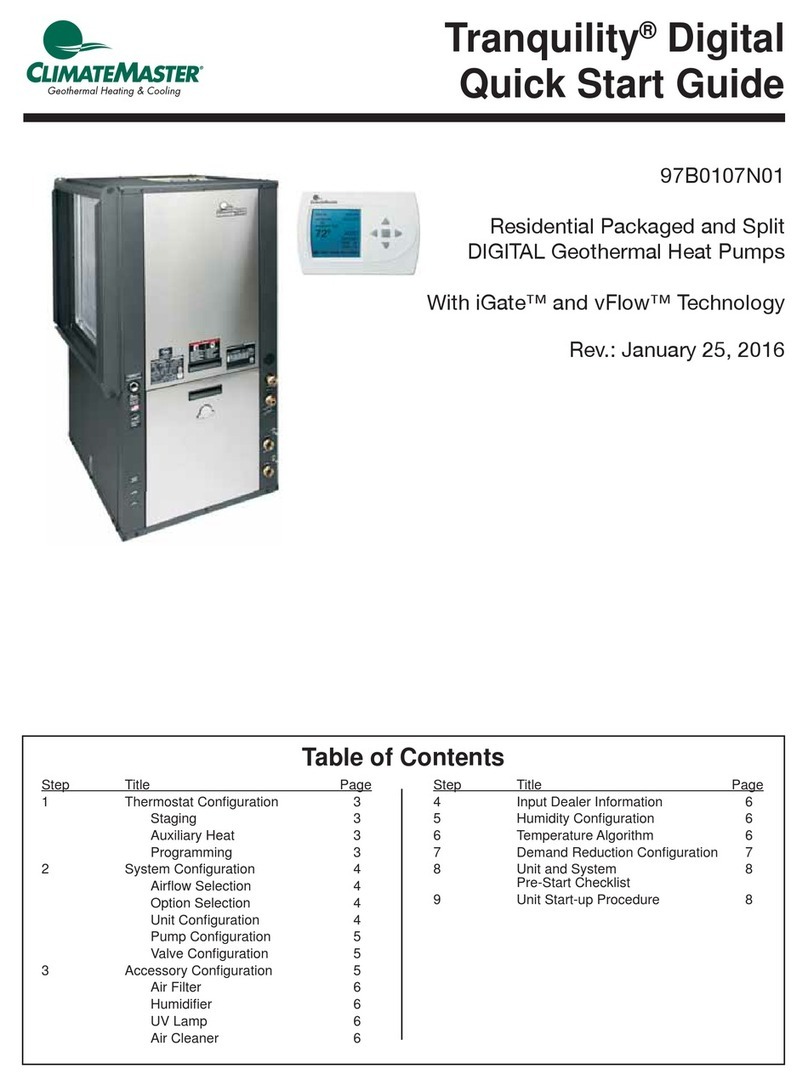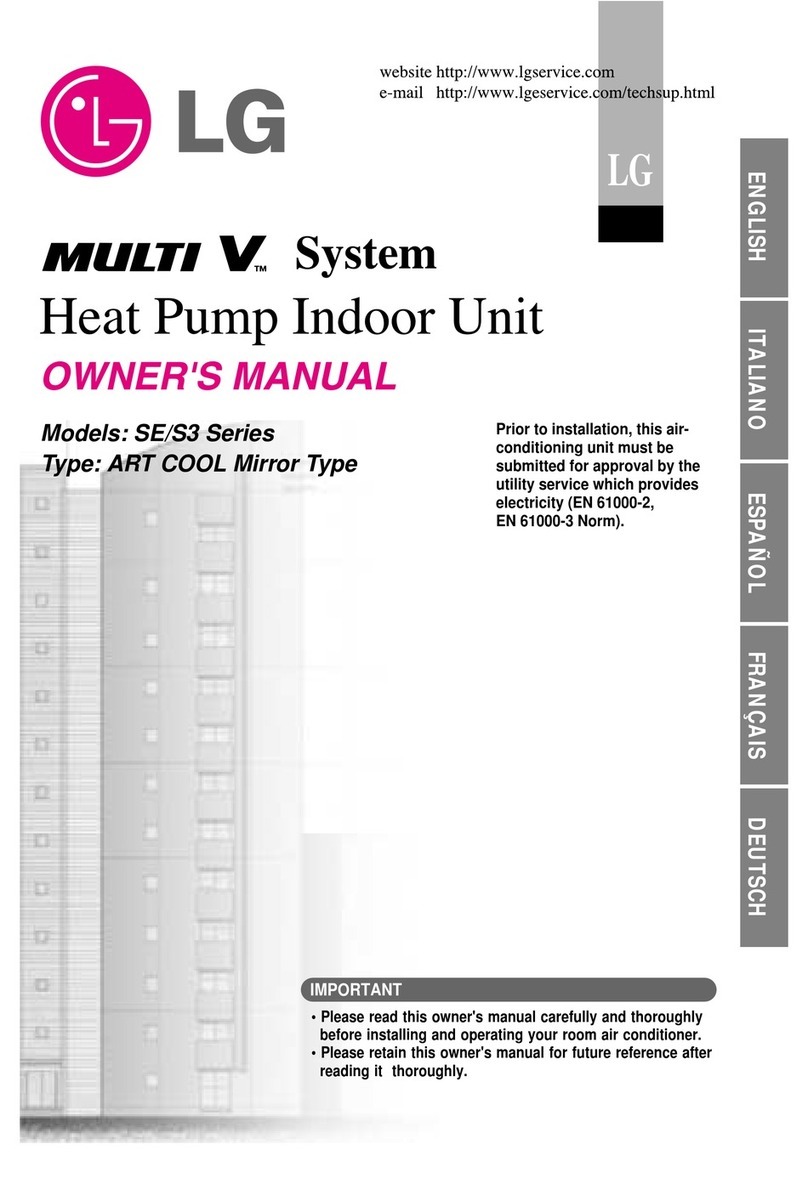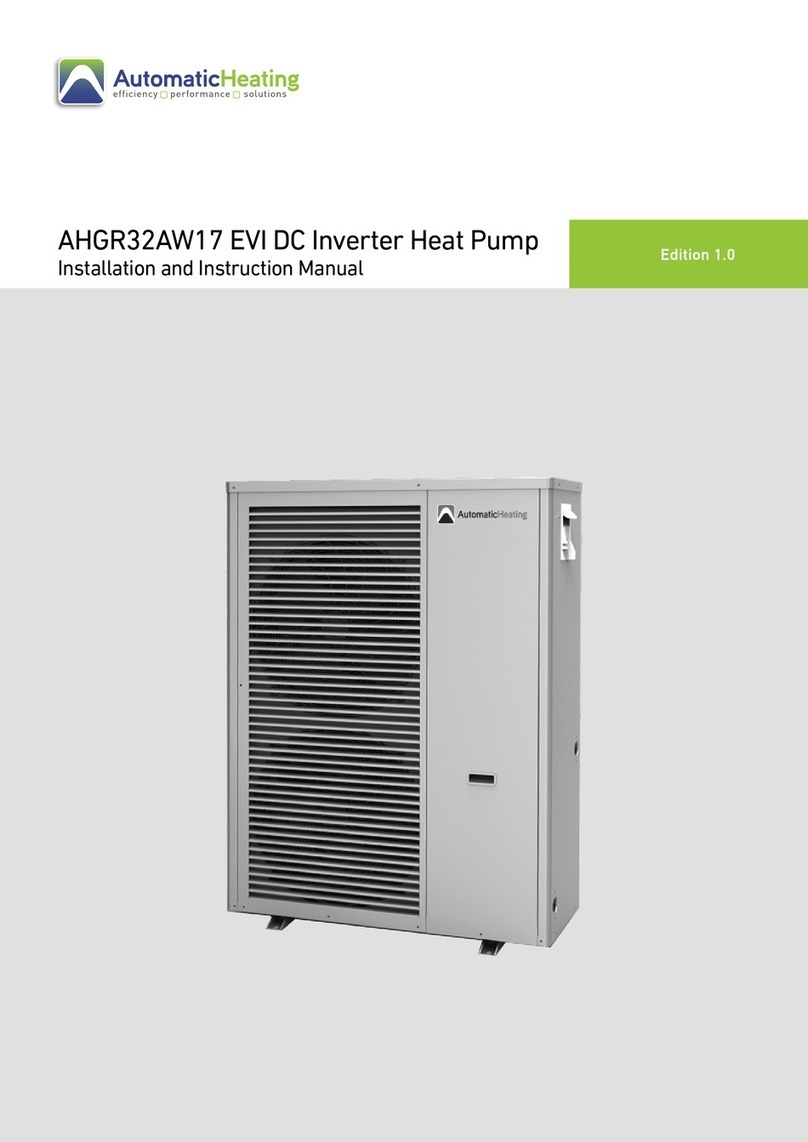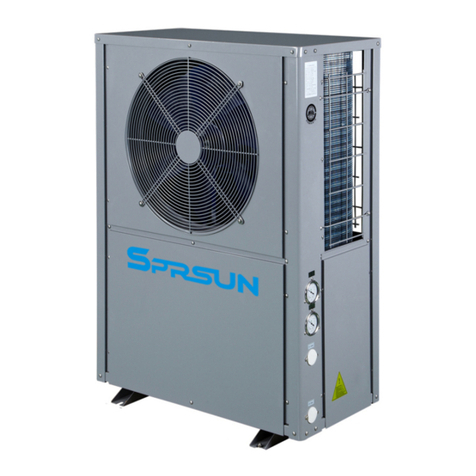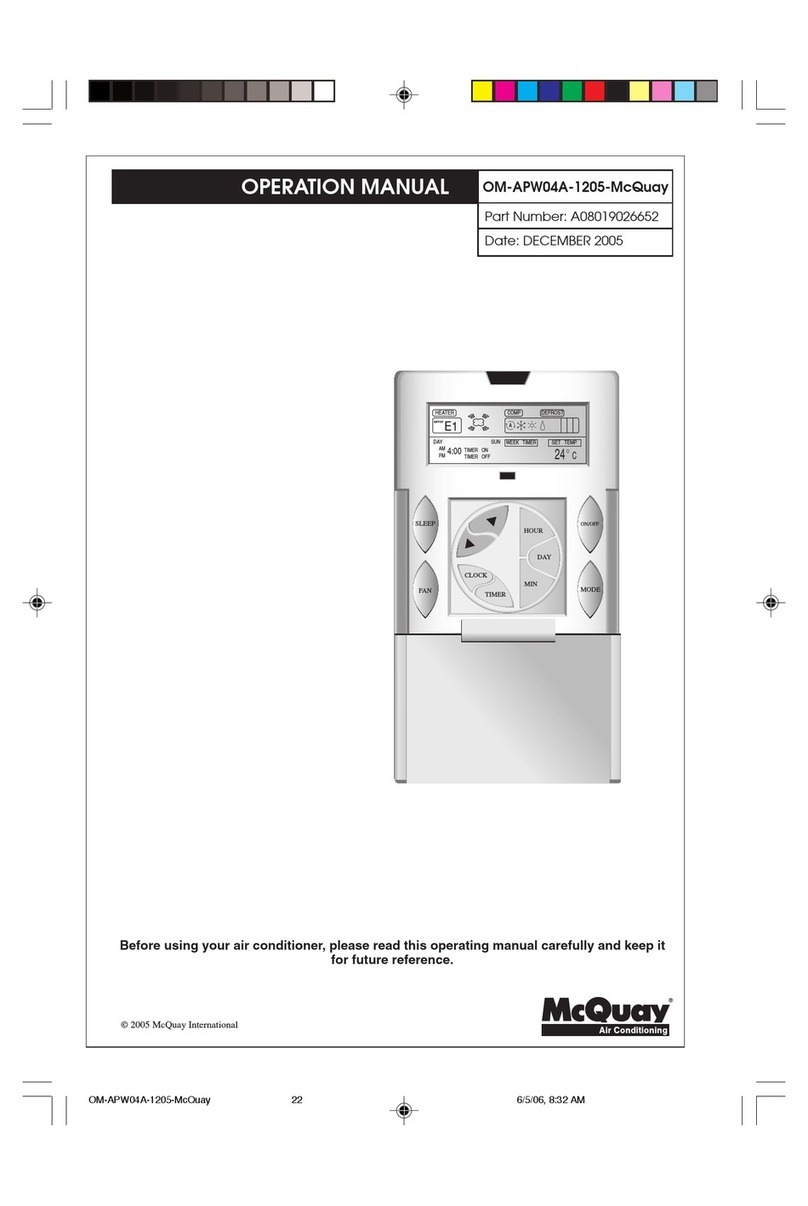
14 ClimateMaster Water-Source Heat Pumps
Tranquility®Large (TL) Series
Rev.: 5 February, 2016
CLIMATEMASTER WATER-SOURCE HEAT PUMPS
Antifreeze -
In areas where minimum entering loop
temperatures drop below 5°C or where piping will be
routed through areas subject to freezing, anti-freeze is
needed. Alcohols and glycols are commonly used as
antifreezes, however your local sales manager should be
consulted for the antifreeze best suited to your area. Low
temperature protection should be maintained to 9°C
below the lowest expected entering loop temperature.
For example, if -1°C is the minimum expected entering
loop temperature, the leaving loop temperature would
be -4 to -6°C and low temperature protection should be
at -10°C e.g. -1°C - 9°C = -10°C. All alcohols should be
premixed and pumped from a reservoir outside of the
building when possible or introduced under water level to
prevent fuming. Initially calculate the total volume of fluid
in the piping system. Then use the percentage by volume
shown in Table 2 for the amount of antifreeze. Antifreeze
concentration should be checked from a well mixed
sample using a hydrometer to measure specific gravity.
Low Water Temperature Cut-Out Setting -
CXM or DXM Control:
When an antifreeze is selected, the FP1 jumper (JW3)
should be clipped to select the low temperature
(Antifreeze -12.2
°C
) setpoint to avoid nuisance faults.
Ground-Water Heat Pump Applications
Shut off valves should be included in case of servicing.
Boiler drains or other valves should be ‘tee’d’ into the
line to allow acid flushing of just the heat exchanger.
Pressure temperature plugs should be used so that flow
and temperature can be measured. Piping materials
should be limited to PVC SCH80 or copper.
PVC or CPVC
should never be used as they are incompatible with the
POE oils used in HFC-410A products and piping system
failure and property damage may result.
Water quantity should be plentiful and of good quality.
Consult Table 3 for water quality guidelines. The unit can
be ordered with either a copper or cupro-nickel water heat
exchanger. Consult Table 3 for recommendations. Copper
is recommended for closed loop systems and open
loop ground water systems that are not high in mineral
content or corrosiveness. In conditions anticipating heavy
scale formation or in brackish water, a cupro-nickel heat
exchanger is recommended. In ground water situations
Ground-Loop Heat Pump Applications
WARNING! Polyolester Oil, commonly known as POE
oil, is a synthetic oil used in many refrigeration systems
including those with HFC-410A refrigerant. POE oil, if it
ever comes in contact with PVC or CPVC piping, may
cause failure of the PVC/CPVC. PVC/CPVC piping should
never be used as supply or return water piping with water
source heat pump products containing HFC-410A as
system failures and property damage may result.
WARNING!
where scaling could be heavy or where biological growth
such as iron bacteria will be present, a closed loop system
is recommended. Heat exchanger coils may over time
lose heat exchange capabilities due to a build up of
mineral deposits inside. These can be cleaned only by a
qualified service mechanic as acid and special pumping
equipment are required. Desuperheater coils can likewise
become scaled and possibly plugged. In areas with
extremely hard water, the owner should be informed that
the heat exchanger may require occasional acid flushing.
Expansion Tank and Pump -
Use a closed, bladder-
type expansion tank to minimize mineral formation due
to air exposure. The expansion tank should be sized
to handle at least one minute run time of the pump to
prevent premature pump failure using its drawdown
capacity rating. Discharge water from the unit is not
contaminated in any manner and can be disposed of in
various ways, depending on local building codes, i.e.
recharge well, storm sewer, drain field, adjacent stream
or pond, etc. Most local codes forbid the use of sanitary
sewer for disposal. Consult your local building and zoning
department to assure compliance in your area.
Water Control Valve -
Note the placement of the water
control valve. Always maintain water pressure in the
heat exchanger by placing water control valves at the
outlet of the unit to prevent mineral precipitation during
the off-cycle. Pilot operated slow closing valves are
recommended to reduce water hammer. If water hammer
persists, a mini-expansion tank can be mounted on the
piping to help absorb the excess hammer shock. Insure
that the total ‘VA’ draw of the valve can be supplied
by the unit transformer. For instance, the slow closing
valve can draw up to 35VA. This can overload smaller 40
or 50 VA transformers depending on the other controls
employed. A typical pilot operated solenoid valve draws
approximately 15VA.
Flow Regulation - Flow regulation can be accomplished
by two methods. Most water control valves have a
built in flow adjustment. By measuring the pressure
drop through the unit heat exchanger, flow rate can be
determined and compared to Table 7. Since the pressure
is constantly varying, two pressure gauges might be
needed. Simply adjust the water control valve until
the desired flow of 2.0 to 2.6 l/m per kW is achieved.
Secondly, a flow control device may be installed. The
devices are typically an orifice of plastic material that
are designed to allow a specified flow rate. These are
mounted on the outlet of the water control valve. On
occasion, these valves can produce a velocity noise that
can be reduced by applying some back pressure. This
is accomplished by slightly closing the leaving isolation
valve of the well water setup.




















